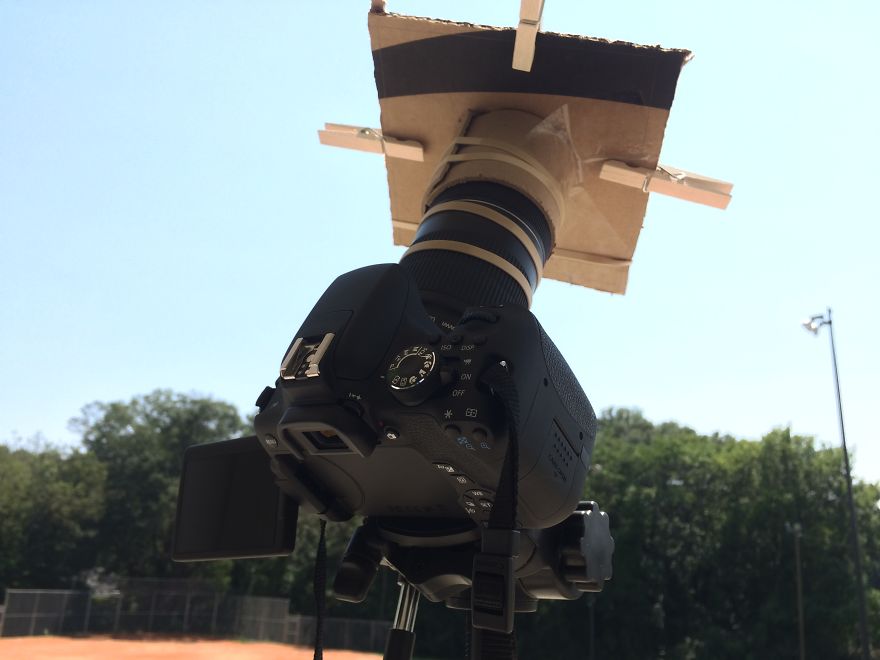
Allen Murabayashi is the Chairman and Co-Founder of PhotoShelter. He's an avid photographer and frequently speaks on how photographers can use online marketing to grow their businesses. This article was originally published on PhotoShelter, and is reproduced here with permission.
This week’s total solar eclipse over the continental U. S. generated a barrage of photos of varying levels of technical and artistic quality. But the best photos shared a common feature: namely, meticulous planning sprinkled with a little luck.
Such was the case for a small team comprised of photographers Andrew Studer (@andrew. studer)and Ted Hesser (@tedhesser) with climbers Tommy Smith, and Martina Tibell who planned and executed a series of unbelievable images in Oregon’s Smith Rock State Park.
Photo by Ted Hesser
Andrew Studer was hired by Columbia Sportswear and Ted Hesser was hired by Goal Zero to cover the eclipse, and they ended up collaborating to create some of the most iconic images of the eclipse despite never having met before.
A few days prior to the eclipse, Hesser says he and Tibell “spent 4-5 days climbing different routes in the park trying to find the right location to get a vantage point of the eclipse where I could have a climber in the shot. ”
They settled on the iconic Monkey Face, which is home to some of the most difficult rock climbing in the world.
“There were a lot of other photographers trying to get similar shots,” says Hesser. “But it sort of became apparent that no one was doing anything near the top. ” Photographer Chris Burkhard captured a similar image of a slackliner, but his position wasn’t as optimal.
Best view in the house. . . it took 4 days of planning and hard work to capture this shot. My girlfriend @martinatib and good friend @thistommysmith climbed the route twice, in scorching heat, to nail the positioning. But we nailed it!
Studer says they used the PhotoPills app to get a rough idea of the sun’s positioning. But Hesser points out that phone apps have limitations. “iPhone apps aren’t accurate enough for these things. I think I got just a little lucky. ” The team decided to move off the projected axis of the sun, past a line of trees that was away from the throng of photographers.
A practice ascent the day before the eclipse took Smith and Tibell nearly 7 hours to complete due to a lot of climbers on the route. On the day of the eclipse, the team set out at 3:30am, only to find that the park wasn’t open until 5:30am. “We just had to wait, then we booked it once the park opened,” says Hesser. Smith and Tibell only took 2 hours to scale the face on the day of the eclipse.
Witnessing the event was mind-blowing for the photographers even though totality barely lasted for a minute and a half. “It was so surreal because there were these various factors that could have gone against the completion of the photo,” says Studer. “There were a lot of wildfires, and a lot of climbers out that day. So we weren’t sure whether we were going to get it. ”
Photo by Andrew Studer
“I was really nervous…There was a lot of doubt creeping in my mind,” says Hesser. “The eclipse was like an alien experience. Hundreds of people were howling. Crickets came out…We were filled with adrenaline. We were trying to get the shot, and the shot [was] right there!”
Unsurprisingly, the images had detractors who thought it was a fake, but a video taken at the time of capture by Shain Blum serves as proof of the event. Hesser brushes off the accusations of fakery saying, “For every 100 positive comments, there’s only one” claiming it’s fake.
Here is a realtime video taken right before totality. I can not tell you how surreal it was to experience this moment. You can hear @tedhesser on the walkie talkie, coordinating with the climber. To get the right position for his shot. As well as tons of camera clicks and people cheering from on top of the rocks. #solareclipse2017 #solareclipse
It's a wrap! @thistommysmith and I making our way down monkey face after a successful eclipse photo shoot with my incredibly talented boyfriend @tedhesser . What an amazing experience! Bonus point - we got a first hand view of the awesome slack line that @chrisburkard and team set up. Photo @cwalkkin
The images have rightfully gone viral. “There were a lot of really neat takes of the eclipse,” says Studer, “but I’m thankful that what we set out to do became possible. It worked. ”
Ted Hesser used a Nikon D800 with AF-S 80-400mm f/4. 5-5. 6G ED VR lens.
Andrew Studer used a Canon EOS-1DX Mark II and 150-600mm f/5-6. 3 DG OS HSM lens.
. dpreview.com2017-8-24 00:42

